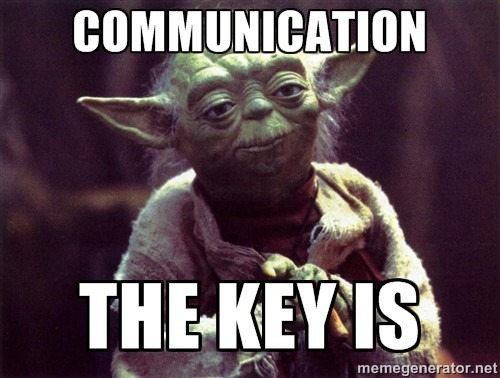10 October 2019
CTO roles and responsibilities? Solving the unsolvable of course!

What is the primary responsibility of the CTO? What makes a good CTO great? I’ve been asking those question myself, and so far have been able to find only one answer. The main role of a CTO it’s not only to do your job well but also to solve problems that may seem unsolvable.
In this article, I’m going to present the top challenges you’re going to face that will test your predisposition for serving the CTO position. If you succeed and overcome those issues, you will be on your way to the path of greatness.
CTO job description
Firstly, let’s get the technicalities out of the way. If you’re new to this business, you’re probably wondering what does CTO stand for and what roles and responsibilities does CTO job title require you to perform.
Whatever the internet may have told you, there is no definite CTO responsibilities list. Responsibilities of CTO differs from company to company – the Chief Technology Officer job description will probably include overseeing software development teams with technical knowledge, team management, project management, strategic planning, choosing software outsourcing etc.
Generally speaking, Chief Technology Officer, sometimes Chief Technical Officer, not only offers technical leadership to developers but also makes sure the technology supports, helps and stays consistent with the company’s business strategy.
I think this general CTO job description is enough for now. I very much prefer practical tips over theory. Now, let’s see what makes a good Chief Technology Officer in the software company great.
See also: Evolution to CTO 👇
What’s first among the roles and responsibilities of a CTO? Finding a balance
In order to find balance, CTO doesn’t have to go through a deadly workout with master Pai Mei like Beatrix Kiddo in “Kill Bill: Vol.2”. CTO’s role focuses on finding a middle ground in day-to-day duties. Below, I present three examples that may look absurd and seem to clash but are going to influence your workflow as the Chief Technology Officer.
You have to know the technology BUT you must quit programming
Chief Technology Officer job is busy enough that you probably don’t have time to stay up-to-date with every little bit of new technology released. And guess what – you don’t have to do it.
Your main goal as Chief Technology Officer is to have enough theoretical and practical technological knowledge to recognise whether a certain solution – let it be a new language, tool or open-source – is worth trying out and eventually introducing to the company’s technology stack or not.
If the solution makes the cut, CTO job is to explain complex technicalities to your management and come up with a complete solution that can be presented to potential clients. All that has to happen without writing a single line of code.
As I’ve written in my previous article for the first-time CTO, most of us have to say “bye-bye” to programming early on and trust our tech team members on coding-related issues more. So in order to be up-to-date, I advise you to do one thing…
HINT: Improve your communication skills.
Chief Technology Officers need to talk to their engineering people about technology on a regular basis. Don’t be afraid to ask them about recent news – you’d be surprised how often they will find something worth exploring. Listen to what they say and stay open-minded.
Devs will really appreciate that they are given the opportunity by their CTO to have a real influence on the company’s tech stack. If you give them proper motivation, they will voluntarily come to show you their recent discoveries and interesting solutions their CTO might have missed.
See also: Trust-building tactics within the team. See what you should know 👇
You have to consult people BUT you must have your own opinion
This leads us to the next issue – everybody has an opinion on everything. It’s no different in tech and software development. Now that Chief Technology Officer’s opinion is the one that matters the most, it’s very easy to slip into dictatorship mode. As you probably suspect though, that doesn’t work at all (and as far as I know, CTO job description doesn’t include leadership over a coup).
What does work is the culture of teamwork – asking your people for their opinions, mentoring junior developers, setting high standards for everybody (including yourself!) will make your team members more motivated and engaged in the company’s life.
HINT: Consult the problematic issues and implement ideas but never take it out on your team if your final decision turned out to be a bad one.
According to basic management skills, it’s very important that you clearly define what you expect from people (apart from good coding).
Examples? Saying “Please explain to the customer what you are doing in the project because I know you’re an expert”, or “You can work remotely but I expect you to be in constant contact with the rest of the tech team because the client requires it” rather than giving orders without an explanation works wonders.
Nobody likes to be bossed around even by the Chief Technology Officer.
Your tech team needs to know they matter and their opinions can be taken into consideration, so make sure that their position and software development experience is heard. During the meeting, all possible strategy options and their business and technological consequences have to be said out loud.
As the CTO, you’re automatically the decision-maker. Chief Technology Officer role here is quite simple, yet difficult – you have to take responsibility for your choices and hope that the engineering and management teams will support your executive vision.

You have to keep control over everything BUT you must delegate tasks
Maybe you’re alpha and omega now, but there are so many letters in-between which make up the full alphabet. Those are your development teams working on different projects. It’s impossible for a CTO to micromanage and double-check everything, so naturally, you need to remove yourself from certain tasks.
If you don’t learn how to delegate, you’re going to be swamped with unnecessary responsibilities and show your engineering team that you don’t trust them. And believe me, a good Chief Technology Officer doesn’t want either to happen.
HINT: Find gaps in the company’s structure and fill them with passionate people.
Controlling everything doesn’t mean lurking behind people’s back all the time (let’s leave something for project managers 😉). CTO job description expects of you to develop and implement a process that will allow you to know exactly what’s going on without going into teeny tiny details. I can tell you how it made it work as a CTO of The Software House.
You’ve got a task X, and you know that similar tasks will appear in the future. Pick a person who you think is qualified enough to handle it and do a trial run by delegating that task. After it’s ready, check the results, give your opinion and praise the work. If the result is satisfactory, ask if they liked this experience and if they’d like to do more of such things on a regular basis.
If they agree, ask how will they combine it with their recent responsibilities. If there’s no way to do that, decide which duties can be delegated to somebody else (maybe ask human resources for a brand new junior developer?).
This way, everybody is focused on the development of particular skills, steady progress and growth, and eventually – promotion! In time, you will structure your company technical hierarchy – your team leaders/lead developers will evolve naturally, as well as people who are happy to code without being involved with business and management tasks. And CTO needs them all.
Always remember to reward people that have done a good job on things you’ve personally delegated to them! Ask if they enjoyed it and if they want to do more. Also keep in mind that if you add additional work to a programmer, it also means you have to take something off their back (ergo: delegating it to somebody else).

See also: How can IT outsourcing help you in your talent search? 👇
Recruiting, hiring and managing the best talent is one of CTO duties
What if there’s nobody to delegate tasks to? Well, that brings us to one of the most important CTO’s responsibilities – putting together a great software development team. And as we all know, it’s not easy. Talented developers are a precious resource for tech companies, so they compete with salaries, perks and modern offices.
However, what’s more important for them than “fruity Fridays” are homely atmosphere, engaging projects and inspiring co-workers.
Like I’ve said in the aforementioned paragraph, some gaps can be filled by internal recruitment. Observe people, research their skills and personal growth through delegating tasks and soon you’ll learn who can be promoted or trusted with more responsibility.
But what happens when you simply need more hands on board or looking for an unusual set of technical skills? I wish the clone factory from “Star Wars” existed, but there’s only one executive decision a Chief Technology Officer can make – recruit externally.
See also: Remote hiring of developers? Check out TSH's list of expert resources 👇
After you identify skills that are required, you need to attract the right talent to your organization. Most CTOs would fill in the position the most experienced senior developers they can find.
However, in my opinion, sometimes it’s worth hiring ambitious juniors and training them with a little help from your recent seniors. With a bit of talent, they will be able to reach proficiency in a certain technology in no time.
HINT: When recruiting people DON’T compare them with current employees who are already on board.
Your teams already know the company culture, tech stack, etc. much better than anyone from the outside ever could. Try to imagine how the person sitting in front of you during the interview will evolve after half a year in your organization when they learn everything they need to know.
A great CTO should treat their attitude and willingness to learn as an investment. Sometimes that can be more valuable than proficient tech skills.
Chief of technology and the magical word: “and”
Let’s start this one with a few real-life examples. When you’re looking for software companies to develop your product, usually, a company ABC says they will create the product fast, while a company XYZ promises to create a good quality product.
Pretty much the same goes for your software engineering staff: very often you’re going to be told that “We can either do it fast or with high quality”, or “We can either rewrite it from scratch and get rid of the legacy code or we can continue but it means it will take time and resources”.
CTO job description involves finding a way to create that product fast AND still maintain high quality. This seems like an impossible challenge but you will be surprised how often people can think of completely unexpected and amazing solutions when pushed a little into brainstorming.
HINT: Leaving the technological comfort zone has unexpected results.
A great CTO (and a great team) are those who are able to come up with a method that might be a bit difficult at the beginning, but in time will result in a customised product that will benefit the client. How to push yourself and your team? Tell them you know it’s a hard task (even for a CTO with tech and management skills), and that’s precisely why you’ve chosen the best people for the job.
Inspire them with your own ideas but also make sure that they have their own space to think and share their thoughts. I’ve lost count how many times this method worked in The Software House – by putting out ideas together we managed to create a full picture of the project and eventually satisfy the client with our creativity. The collective effort brings magical “and” to life!
See also: The five most common problems in software development projects 👇
CTO responsibilities include being able to predict and adjust to the market
Finally, it’s the Chief Technology Officer job to make a distinction between temporary hype and future-oriented solutions. And let me tell you: to foresee whether a given technology will work out and become widely popular or not is a lottery. So my advice is…
HINT: Before you do anything drastic like introducing new technological vision to your clients, try it out first.
Do you know how the vicious tech circle works? When seeing new technology, experienced developers immediately want to try it out of boredom – new developers (who haven’t found their favourite technologies yet) just google what’s in right now, and new things always hit high positions. Then, a snowball effect happens and according to technological buzz it’s “the next big thing”.
After a few months, devs get bored again and go back to the good, old stuff. As a result, a secondary market is created – customers are stuck with applications written in that hyped-up technology and they look for programmers who know how to deal with it.
And there’s fewer and fewer of them because they have gone back to their proven and verified technologies. Ergo: because they’re scarce, hiring them is extremely expensive. Due to high costs, customers are left behind with legacy code and a massive problem.

However, once in a while new technology is a hit. At The Software House, it was Node.js – firstly we introduced PHP, then Node.js. We followed the trend and it worked because it’s being constantly developed and is loved by the IT industry.
Currently, our new darling is Svelte framework. However, we didn’t just jump the hype train and started selling it to our clients straight away. As a Chief Technology Officer, I made an executive decision that our developers need to become familiar with this technology first, and the opportunity presented itself.
We were invited to the meet.js Summit conference and we’ve prepared a simple TypeRunner game to make our stand more appealing to participants. People loved the game and our developers had an R&D session that gave them the practical approach to Svelte.
Now we’re just observing how the technological market behaves and business reacts. If the technology begins to go mainstream, both I and my developers have the necessary experience and options about Svelte. I hope I can say the same about my fellow CTOs.
By the way, throughout the whole product development, I haven’t written a single line of code myself. Like I’ve said before – it’s not Chief Technology Officer job to code. But, by following our process and talking to developers involved, I know exactly what to think about Svelte.
See also: What is a technology stack and how to choose it correctly? 👇
Does Chief Technology Officer job description even exist? I don’t think so…
Of course, there are many more challenges waiting for CTOs – from data protection and cyber-attacks to business relationships with management. A single CTO job description doesn’t exist because every organisation demands something different. One thing is for sure: a good CTO (just) correctly executes the technological plan.
A great CTO draws talents to the company, inspires them to improve and helps them thrive.
Keep that in mind next time somebody will ask you about Chief Technology Officer job description.
At The Software House, we know that CTO role is very demanding and we respect how much time and effort is needed to properly fulfil their responsibilities – from technological development and business vision to leadership and management skills. That is why we’ve prepared a special resources hub to support CTOs and their day-to-day jobs. It includes business topics, practical tips, invitations to webinars and free open-source tools. Everything a great CTO might need – so enjoy!
At The Software House, we know that CTO role is very demanding and we respect how much time and effort is needed to properly fulfil their responsibilities – from technological development and business vision to leadership and management skills. 🚀
That is why we’ve prepared a special resources hub to support CTOs and their day-to-day jobs. It includes business topics, practical tips, invitations to webinars and free open-source tools. Everything a great CTO might need – so enjoy! 👇


